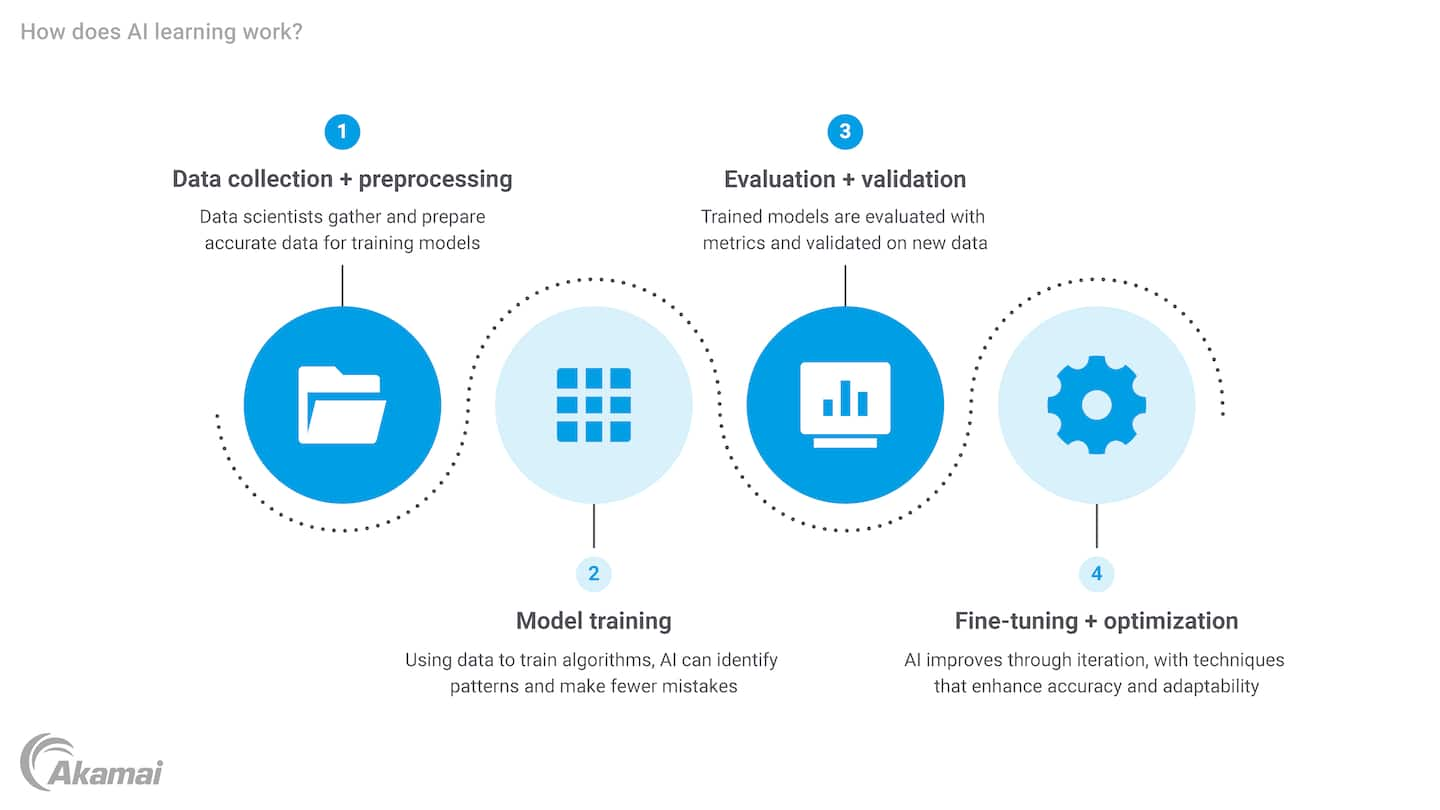AI learning is the process in artificial intelligence by which machines acquire skills and knowledge through data and experience, enabling them to improve over time.
Frequently Asked Questions
Fine-tuning is the process of taking a pre-trained AI model and further training it on a specific dataset to adapt it for a particular task or improve its performance in a targeted area.
Large language models (LLMs) are AI systems trained on massive datasets to understand and generate human-like text by predicting the next word or phrase in a sequence.
Natural language processing (NLP) is a branch of AI that enables computers to understand, interpret, and generate human language, facilitating specific tasks like translation, sentiment analysis, and text summarization.
Neural networks are computing systems inspired by the human brain, consisting of layers of interconnected nodes (neurons) that process data and identify patterns to perform tasks like classification and prediction.
AI courses, tutorials, and open source resources build foundational skills. Courses in SQL and computer science can also provide essential knowledge for working with AI models and datasets.
Why customers choose Akamai
Akamai is the cybersecurity and cloud computing company that powers and protects business online. Our market-leading security solutions, superior threat intelligence, and global operations team provide defense in depth to safeguard enterprise data and applications everywhere. Akamai’s full-stack cloud computing solutions deliver performance and affordability on the world’s most distributed platform. Global enterprises trust Akamai to provide the industry-leading reliability, scale, and expertise they need to grow their business with confidence.


